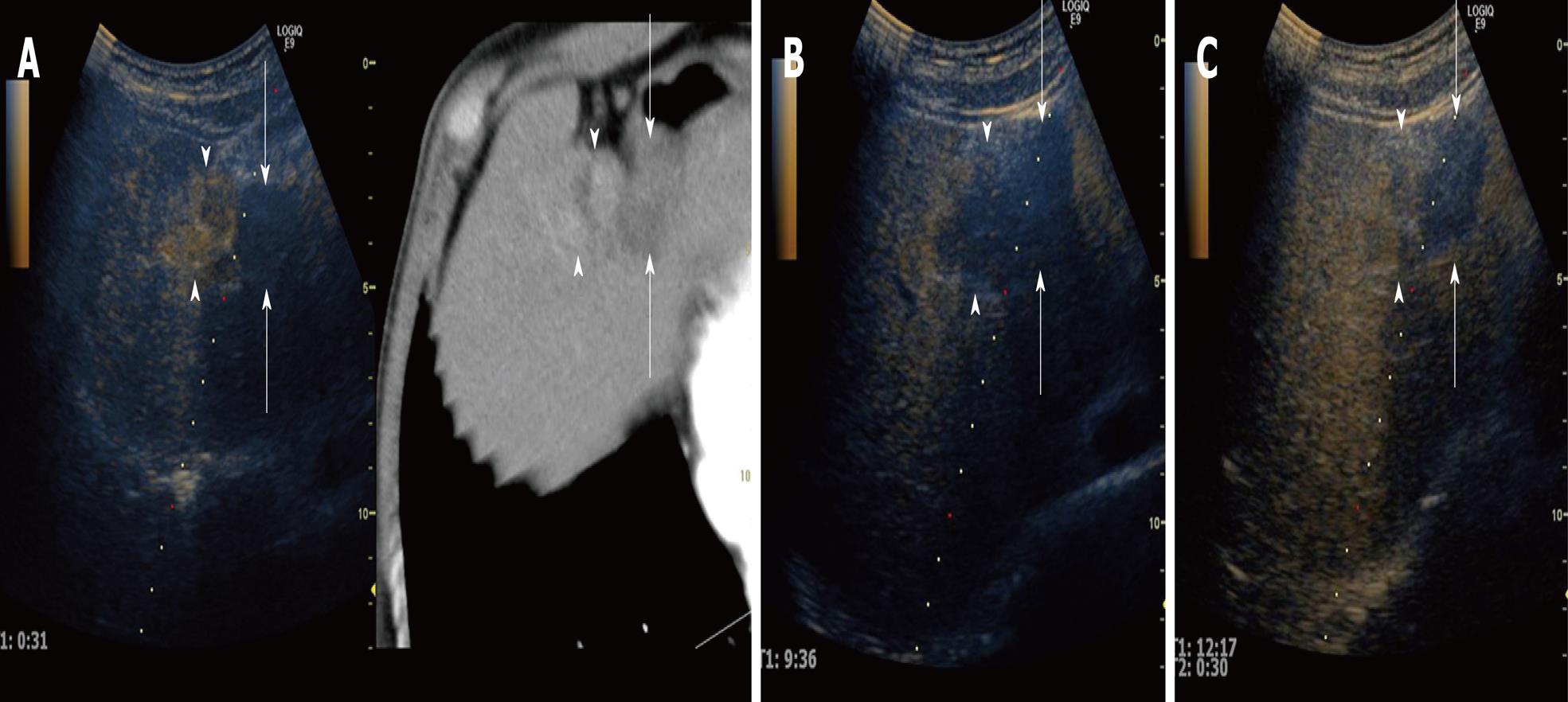Copyright
©2010 Baishideng.
Figure 1 A 67-year-old man with recurrent HCC (maximum diameter 25 mm) in segment IV.
A: Fusion image combining arterial phase contrast-enhanced CT (right side) and early phase Sonazoid-enhanced US employing the coded phase inversion (CPI) mode at a low MI (left side). Arterial phase contrast-enhanced CT shows a high attenuation area (arrowheads) adjacent to the non-enhanced area treated by radiofrequency ablation (RFA) (arrows) in segment IV. Early phase Sonazoid-enhanced US by the CPI mode at a low MI shows homogeneous enhancement in the recurrent viable area (arrowheads) and no enhancement in the necrotic area (arrows). These enhanced and non-enhanced areas correspond well to the arterial phase contrast-enhanced CT; B: Late phase Sonazoid-enhanced US by CPI mode at a low MI shows a perfusion defect (wash out) in both the recurrent viable area and the necrotic area (arrowheads). It is difficult to differentiate between the necrotic and viable areas because both appear as a perfusion defect; C: Defect on re-perfusion image with Sonazoid-enhanced US by the CPI mode at a low MI shows tumor enhancement in the recurrent viable area which previously showed a perfusion defect in the late phase (see B) (arrowheads). The necrotic area appears as a perfusion defect (arrows).
- Citation: Numata K, Luo W, Morimoto M, Kondo M, Kunishi Y, Sasaki T, Nozaki A, Tanaka K. Contrast enhanced ultrasound of hepatocellular carcinoma. World J Radiol 2010; 2(2): 68-82
- URL: https://www.wjgnet.com/1949-8470/full/v2/i2/68.htm
- DOI: https://dx.doi.org/10.4329/wjr.v2.i2.68









